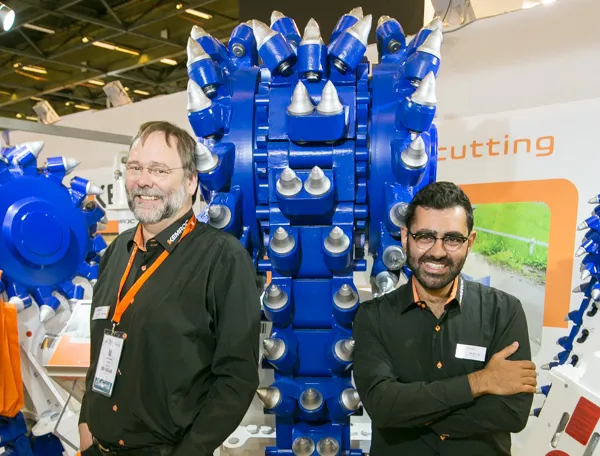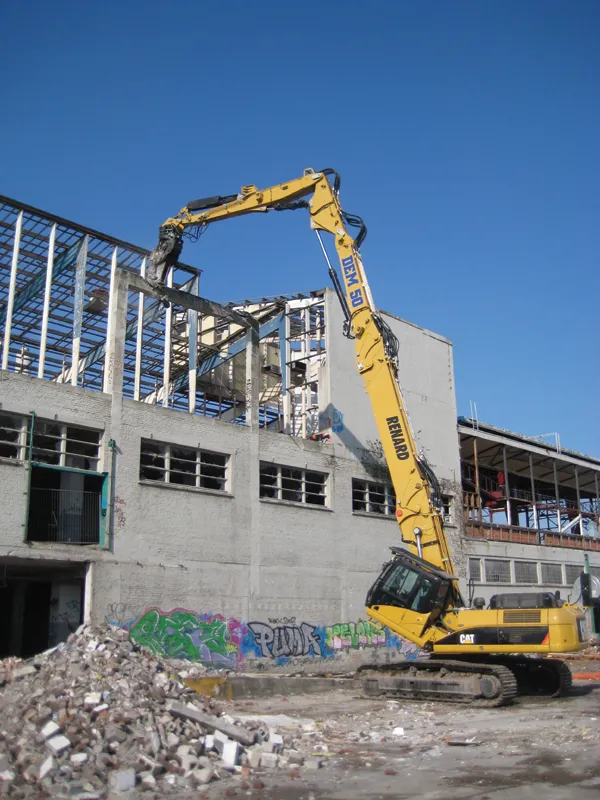
“This is the first time we have exhibited the chain cutter in France,” says Klaus Ertmer, Kemroc managing director and the inventor of all the attachments. “Because the cutting head has a chain in the middle, it means that you can dig very small, deep trenches with the machine.”
Emroc developed the machine in response to feedback from customers, says Ertmer. Standard cutter attachments have cutting wheels at either edge, and must be moved from one side to another to dig the trench, whereas with the EK tools, a straight cut is possible. This requires less skill from the excavator or backhoe operator and also speeds up the process.
Ertmer started developing the EK range in 2012, perfecting the chain technology – which has been patented - in the Middle East. “It took us a long time to make the chain reliable,” says Ertmer. “It wasn’t easy.” To date, Kemroc has sold around 60 EK attachments, says Ertmer, largely in the Middle East but also in Europe too.
Visitors to Ertrmer’s stand, which is adjacent to that of its French dealer, Witek, can also see the combination of a slim DMW cutter wheel with its new C&B breaker tool. This system could be used to demolish reinforced concrete structures or for rock extraction.
The DMW wheel is first used to cut slots in the concrete or rock, with the spacing and depth dependent on the material being cut. The wedge-shaped breaker with picks at either side of its tip is then pushed into the grooves to force the concrete or rock apart.
“It makes a good alternative where drill and blast is not possible, due to restrictions on noise or vibration,” says Ertmer. “It can be used for breaking soft or medium-hardness rock.”
Though Ertner designed his first cutting tool attachment in 2000, Kemroc has only been in existence for just over a year - since Atlas Copco acquired Ertmer’s firm Erkat which supplies traditional trenching tools, without the central chain technology. Kemroc supplies markets around the world, says Ertner, including its home country of Germany, Switzerland, North Africa, Japan and the US.








